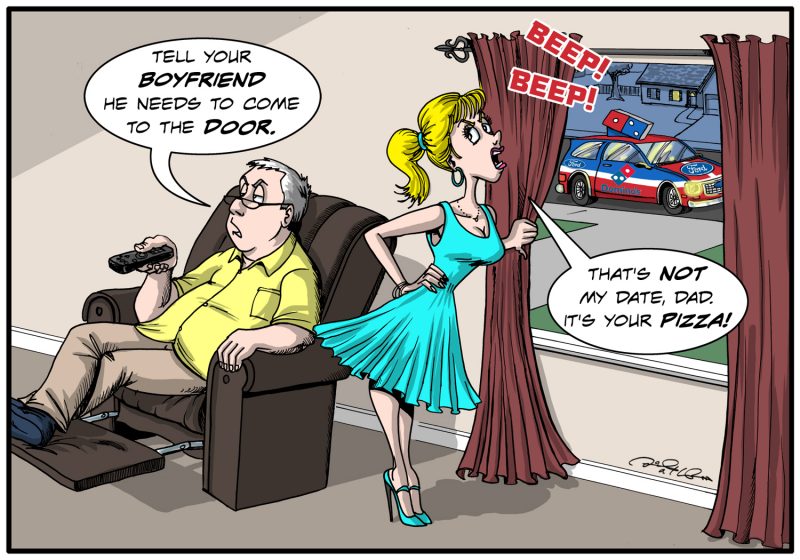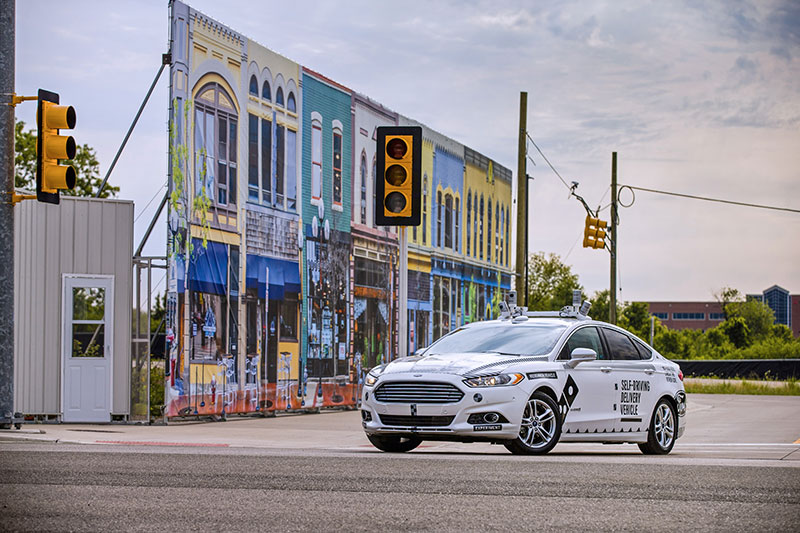By Tom Kaiser
It’s here, mass-market pizzas delivered by a fully autonomous car thanks to a home-state partnership between Domino’s and Ford. While it’s only up and running with one car in Ann Arbor, Michigan, it’s a significant mile marker for both the automotive and restaurant industries that are both undergoing epochal shifts as tech promises made decades ago finally come to reality
A self-proclaimed auto enthusiast—like everybody else in Michigan—Domino’s EVP, Chief Information Officer Kevin Vasconi said the project is so enjoyable that he and others often find themselves working late and coming into the office early just to dive back into the work.
“We have people volunteering to work on the project, because we have a lot of engineering geeks here,” Vasconi said. “It’s tremendously exciting, and I’ve been involved … literally since day one when we sat down with our partners at Ford and talked about what we might do.”
As nearly all automakers are currently testing countless facets of self-driving cars, this test with Domino’s is all about the human element—namely, how everyday consumers react to autonomous deliveries that, by design, only come up to the curb rather than the front door.
“They are going to get the self-driving vehicles all figured out, that’s not what this test is about,” Vasconi said. “It’s about starting to push, quite honestly, the limits around if you’re going to do package delivery, in our case perishable food delivery, how the consumer is going to react to that.”
With so many safety and regulatory concerns related to autonomous vehicles, Domino’s public message is that it’s primarily testing customer reactions to the futuristic pizza deliveries—of course, while avoiding all the obstacles human and otherwise that every driver faces, be they homo sapiens or four-wheeled androids.
At press time, autonomous deliveries were occurring at nearly all daytime and evening hours exclusively with Domino’s employees who opt-in to be delivery hamsters. Vasconi said initial reactions have been largely positive, with whole families coming outside to take delivery in some cases, sometimes uploading the experience to YouTube and/or social media accounts, adding to the buzz.
Domino’s first phase of testing, using a heavily modified Ford Fusion sedan, will continue for another three weeks before doubling down with additional cars and new situations. All autonomous deliveries are recorded, and the company conducts post-delivery interviews to gauge the details of their reaction to the experiment.
Asked which company first proposed the experiment, Vasconi said it was a mutual decision. Domino’s CEO Patrick Doyle and Ford’s new CEO, James Hackett are friends. While acknowledging the massive wow-factor of autonomous pizza delivery, he underscored that the company is trying to pull the future forward in pursuit of a large-scale, national rollout of autonomous technology sometime in the undetermined future.
“We are absolutely committed to the best customer experience and customer choice,” he said. “I never want to lose an order because somebody finds it hard to do business with Domino’s, because we have a lot of competition and it’s very easy if you don’t like that Domino’s experience to go to Papa John’s or Pizza Hut—and we don’t want that to happen.”
As the conversation inevitably turned toward drones, and when we’ll start seeing pizza pies lowered from the sky, Vasconi said regulatory challenges with commercial drone deliveries is so complicated that it’s still unclear when that technology will be ready for takeoff, adding that autonomous vehicles are going to have a faster adoption given all the vehicular infrastructure that already exists.
“We don’t want to be passive in this,” he said. “We want to help figure this out so we can be first to market.”



